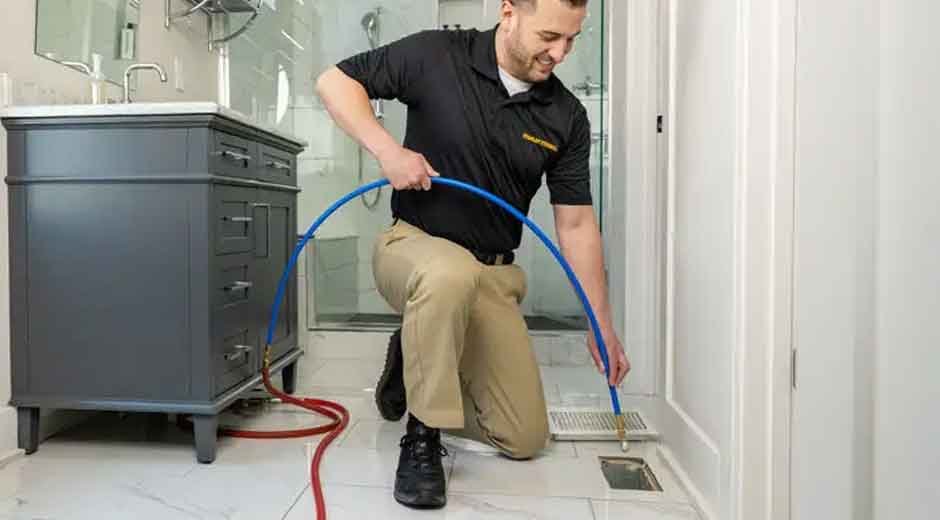When people think about air quality, they often picture smog, exhaust, or outdoor pollution. But the truth is, the air inside your home can be just as polluted, sometimes even more so. One of the most overlooked sources? Your air ducts.
Air ducts are out of sight, and unfortunately, that often means they’re out of mind. But the moment you switch on your heating or cooling, those ducts become the delivery system for every particle, contaminant, and allergen they’ve collected over time. That’s not just gross. It can also affect your health, your comfort, and even your wallet.
So if indoor air quality matters to you, start where the air starts — with the ducts.
What’s Really Lurking Inside Your Ducts?
It’s not just dust. Over the years, ducts collect all kinds of debris, especially if they’ve never been cleaned professionally. Here’s what tends to build up:
- Dust and dead skin cells– These tiny particles accumulate fast and get blown around with every cycle.
- Pet dander and hair– If you have animals, their fur and skin flakes cling to duct walls and filters.
- Mold and mildew– Moisture inside the system can lead to microbial growth, especially if there are leaks or poor insulation.
- Pollen and outdoor pollutants– These often get pulled in through vents and settle inside.
- Insects and rodent droppings– In some cases, pests find their way in and leave behind waste and allergens.
This buildup doesn’t stay hidden. As air moves through the system, it picks up contaminants and circulates them around your home. That’s why air ducts should never be treated as a “set it and forget it” part of the house.
How Dirty Ducts Affect Your Air Quality
Every time your HVAC system runs, air passes through your ductwork. If those ducts are lined with debris, the air picks up particles along the way. This can lead to a range of problems, which is why it’s important to contact Pure Air for air duct cleaning in Harford County, MD. The sooner you do it, the better.
Respiratory irritation is one of the most common effects. If you or someone in your home has allergies, asthma, or other respiratory sensitivities, dirty ducts can make symptoms worse. Sneezing, coughing, congestion, and watery eyes are all common signs that something isn’t right.
Then there’s indoor air pollution. It’s not always visible or easy to detect, but it builds up quietly and steadily. Over time, long-term exposure to airborne pollutants can contribute to more serious health concerns, especially in children and older adults.
Another red flag? Persistent odors. Musty or stale smells can come from decaying debris, mildew, or biological growth inside the ducts. If you’ve ever noticed a funky smell when the system turns on, your ducts could be the culprit.
The Role of Professional Duct Cleaning
Vacuuming a vent or replacing an air filter is a good start, but it’s not a replacement for a full duct cleaning. Professional duct cleaning goes deep into the system, removing debris from the inside walls of the ducts, not just the outer vents.
It also involves equipment that can dislodge and extract particles without letting them recirculate into your home. The process can vary depending on the size and layout of your system, but the goal is the same: remove buildup, sanitize affected areas, and restore proper airflow.
For homes with pets, smokers, recent renovations, or any history of moisture problems, professional cleaning becomes even more important. These factors increase the amount of debris and pollutants in your duct system.
What You Can Expect After a Proper Cleaning
Once your ducts are professionally cleaned, the change might be subtle at first. But over time, many people notice several key differences:
- Cleaner indoor air– Less dust floating around, fewer allergy triggers, and a generally fresher feel to the air.
- Reduced odors– That stale or musty smell disappears when the source is removed.
- Better airflow– Clean ducts mean your HVAC system doesn’t have to work as hard to move air.
- Improved efficiency– When the system runs more smoothly, it can reduce strain and energy use.
These aren’t just “nice to have” improvements. Clean ducts can extend the life of your HVAC system and even reduce your energy bills by helping everything run more efficiently.
How Often Should Ducts Be Cleaned?
There’s no one-size-fits-all answer, but most experts recommend having your ducts professionally cleaned every 3 to 5 years. That timeline can change depending on your lifestyle and environment.
Consider more frequent cleanings if you:
- Have pets that shed
- Live with allergy sufferers
- Recently completed a home renovation
- Live in an area with high outdoor pollution or dust
- Have noticed visible mold, odors, or increased allergy symptoms
Even without obvious issues, a routine cleaning can prevent problems before they begin. It’s much easier to keep a clean system maintained than to restore one that’s been neglected for years.
Don’t Forget the Rest of the System
While ducts are a major part of your air system, they aren’t the only part that affects air quality. Dirty coils, clogged filters, and neglected blowers all contribute to the air you breathe.
During a professional duct cleaning, it’s smart to ask about a full system inspection. A trained technician can spot issues like mold, leaks, or worn insulation that you might miss. Catching those problems early can prevent bigger headaches later.
It’s also worth checking that your system is sealed properly. Gaps and loose connections let unfiltered air bypass your system and pull contaminants into your ducts. Proper sealing keeps the system efficient and the air cleaner.
Clean Ducts, Cleaner Life
It’s easy to overlook what you can’t see. Ducts hide behind walls and ceilings, quietly doing their job, until they stop doing it well. Clean ducts don’t just move air. They move air that you want to breathe, air that supports your health, your home, and your comfort.
Improving indoor air quality isn’t just about opening a window or buying another filter. It starts at the source. And that source is your ducts. Give them the attention they deserve, and you’ll breathe the difference.










